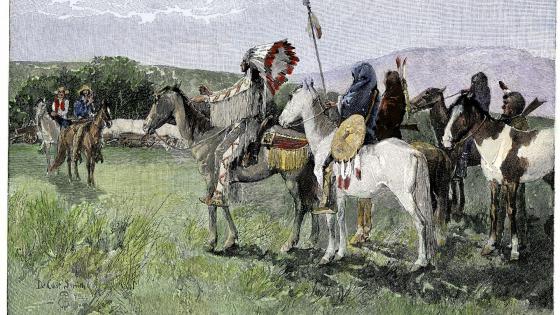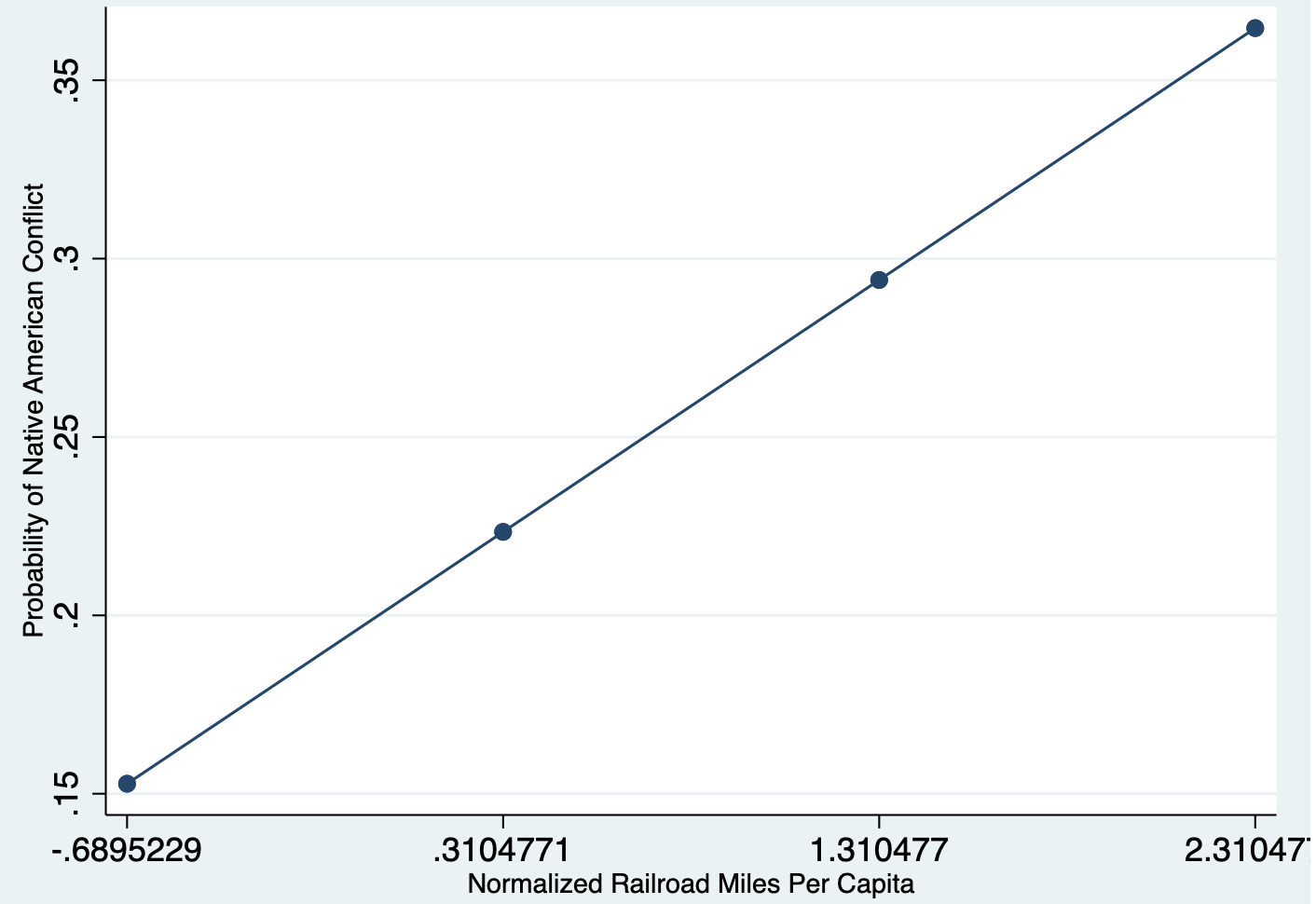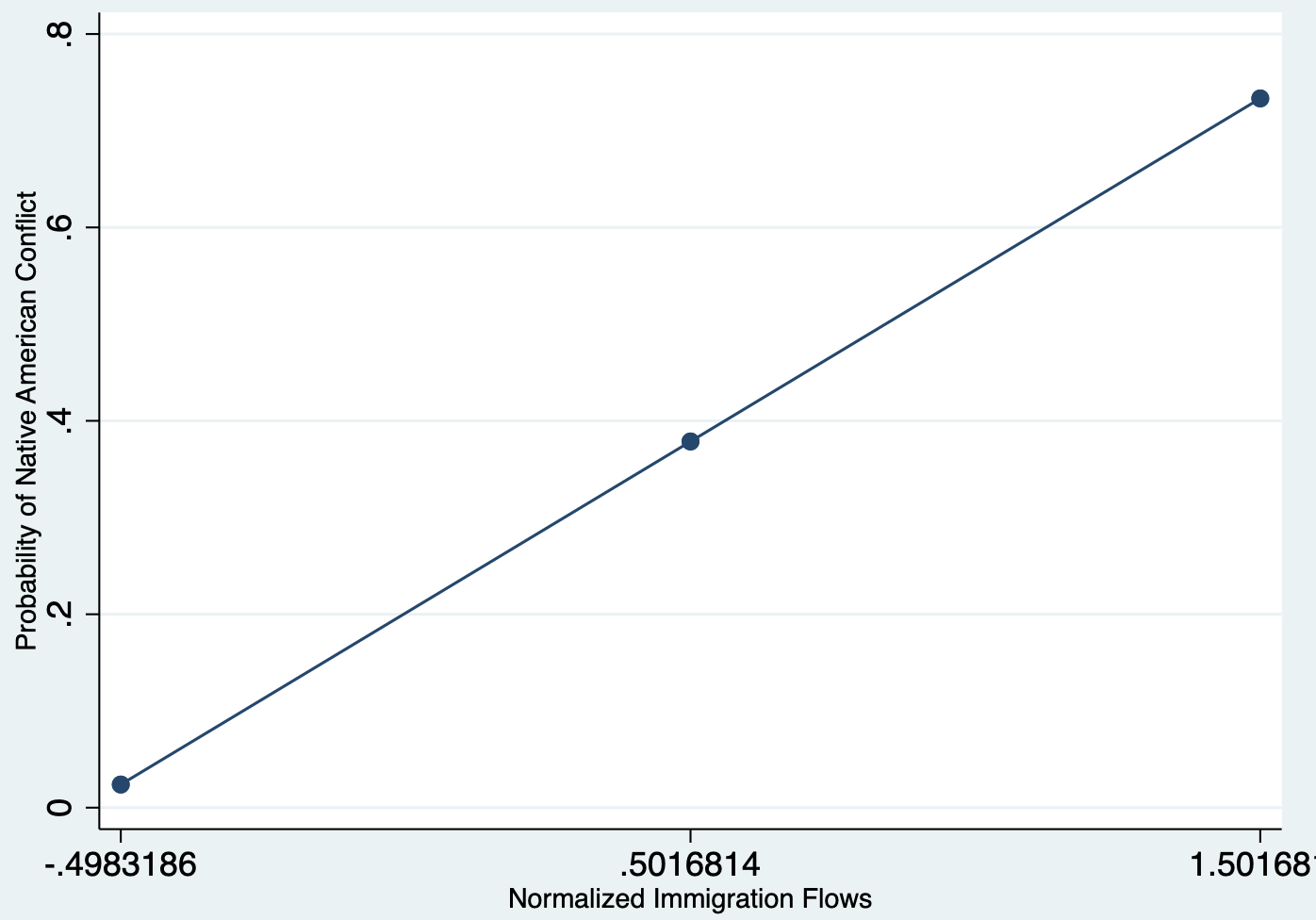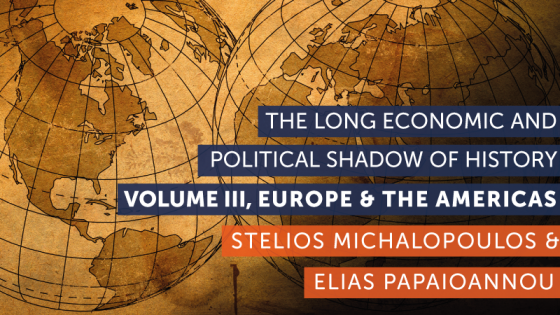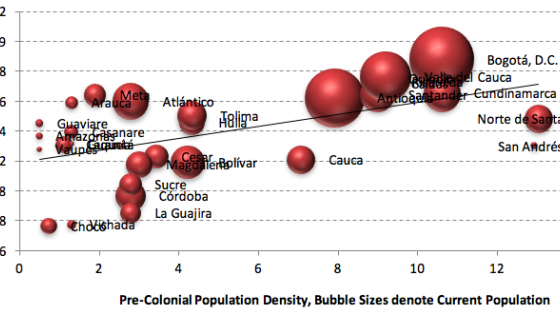European immigration to the US is widely regarded as an important contributor to the development of the US economy over the last 250 years. Recessions in Europe often pushed Europeans to cross the Atlantic Ocean and migrate to the US in search of better economic opportunities (Sequeira et al. 2017). Many European migrants settled in the western US, particularly during the 1870s when the trans-continental railroads such as the Northern and Central Pacific reduced the cost of moving to the western US and California. Absent the railroad, immigrants had to cross the Rockies using horses and wagons. The journey was often dangerous given the rugged terrain, and could take months to complete before settlers reached their final destination. With the construction of the transcontinental railroads, settlers could move west in a matter of weeks.
We contribute to the literature on economic shocks and conflict by examining the impact of European recessions on Native American conflict in the western US during the late 19th century from 1869 to 1890 (Bazzi and Blattman 2014, Miguel et al. 2004, Besley and Persson 2008, Fisman and Miguel 2008). Our study also follows from the well-known work by Acemoglu et al. (2001) that emphasises the role of institutions in economic development. In the case of Native Americans, the westward movement of European migrants led to the defeat and dislocation of the indigenous population and established different institutions in the US that dramatically altered the path of development in the west and throughout the country. Our findings also contribute to the literature that examines the link between immigration and conflict (Salehyan 2008, Fearon and Laitin 2011).
Our empirical analysis uses recession dates for England to instrument for European immigration to the US to address the problem that immigration is an endogenous variable. Burns and Mitchell (1947) dated UK recessions in the late 19th and early 20th centuries using various macroeconomic series from the period.
Our results show that immigration, when interacted with railroad miles, significantly increased the probability of a Native American conflict – that is, conflict between US troops and a Native American tribe – three, six, nine, 12, and 15 months after the onset of a European recession. The time delay likely reflects how long it took for a European to decide whether to move, and then actually move, to the western United States. The empirical analysis also demonstrates the importance of railroads for increasing Native American conflict. Railroad access combined with recession driven immigration caused the probability of a Native American conflict to increase by approximately 46% from 1869 to 1890.
In Figure 1 below, a one standard deviation increase in railroad miles increases the probability of conflict by 0.07, or 7 percentage points. Figure 2 shows that a one standard deviation increase in immigration flows increases the probability of conflict by 0.35, or 35 percentage points.
Figure 1 Average marginal effects of railroad miles per capita
Figure 2 Average marginal effects of immigration flows
As for the other control variables in the empirical specifications, we find that higher commodity prices raised the probability of a Native American conflict only negligibly. Our analysis also suggests that neither gold and silver mining discoveries or the size of the US Army had a significant impact on the probability of a Native American conflict.
Overall, our results demonstrate that European immigration had some severely negative consequences for Native American tribes. European recessions were an exogenous factor that significantly increased the probability of a Native American conflict. Time and again, Native Americans were driven off their land and often relocated to areas with inferior land and rainfall. As such, European immigration to the American west likely had long-term negative effects on economic conditions for Native Americans.
References
Acemoglu, D, S Johnson, and J Robinson (2001), “The colonial origins of comparative development: An empirical investigation”, American Economic Review 91(5): 1369-1401.
Bazzi, S and C Blattman (2014), “Economic shocks and conflict”, American Economic Journal 6: 1-38.
Besley, T and T Persson (2008), “The incidence of civil war: Theory and evidence”, NBER Working Paper No. 14585.
Burns, A and W Mitchell (1947), Measuring business cycles, New York: National Bureau of Economic Research.
Del Angel, M and G Hess, and M Weidenmier (2022), “European recessions and Native American conflict”, NBER Working Paper No. w29812.
Fearon, J and D Laitin (2009), “Sons of the soil, migrants, and civil war”, World Development 39: 199-211.
Fisman, R and M Edward (2008), "Do conflicts cause poverty, or vice-versa?", VoxEU.org, 29 November.
Miguel, E, S Satyanath, and E Sergenti (2004), “Economic shocks and civil conflict”, Journal of Political Economy 112(4): 725-753.
Salehyan, I (2008), “The externalities of civil strife: Refugees as a source of international conflict”, American Journal of Political Science 52 (4): 787–801.
Sequeira, S, N Nunn, and N Qian (2017), “The immigrants who made America”, VoxEU.org, 17 May.
